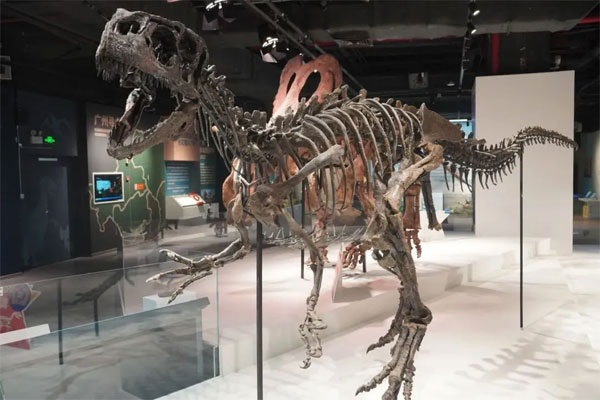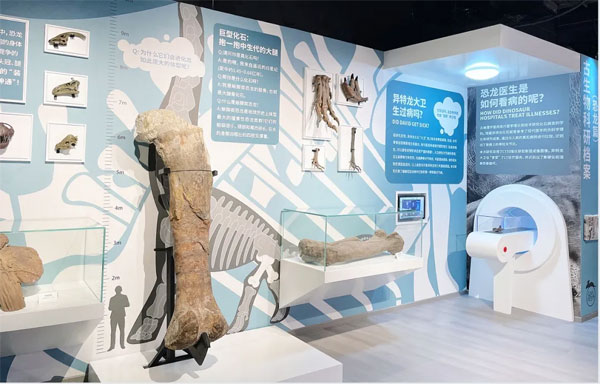Tianhe museum makes dinosaur research breakthrough
The Grandview Museum of Natural Science – located in Tianhe district – recently announced a scientific breakthrough it made in collaboration with a research team from the China University of Geosciences Beijing, led by associate professor Xing Lida.
Their latest research, published in the international journal Historical Biology, is entitled Forearm range of motion in Allosaurus fragilis. The study delves into the forelimb mobility of Allosaurus, a large bipedal predator, offering fresh insights into its hunting strategies and survival challenges.
The publication marks the third SCI, or Science Citation Index, academic paper from the private museum.

The ever-popular dinosaur exhibit "David" takes pride of place at the museum. [Photo/WeChat account: tianhefabu]
The museum is displaying a remarkably well-preserved Allosaurus fossil, affectionately nicknamed "David".
It is the only authentic Allosaurus fossil being publicly exhibited in China, with an exceptionally intact skull and abdominal ribs. Since its debut in the museum at the end of 2021, "David" has not only captivated visitors but also served as a focal point for scientific research.
The research team employed laser scanning to create morphological models of the fossil's surface and then developed a 3D digital model of the forelimbs. This enabled a comprehensive assessment of the forelimb's range of motion.
The study revealed significant insights into the flexibility of the Allosaurus forelimbs. The shoulder and elbow joints could flex and extend over 70 degrees, while the finger joints had a maximum flexion-extension range of 90 degrees. These findings are said to underscore the critical role of the forelimbs in the Allosaurus's hunting techniques.

The CT apparatus for Allosaurus pathology study is on show. [Photo/WeChat account: tianhefabu]
However, the study found that the limited range of motion in the shoulder joint suggested that the forelimbs were primarily used for grasping prey but could not extend forward.
This implies that the Allosaurus likely made the initial contact with its prey using its mouth, with the forelimbs being used to hold onto the prey's torso or neck or to hook onto objects.
In addition, the study revealed this particular dinosaur's remarkable resilience in recovering from a right shoulder injury.
